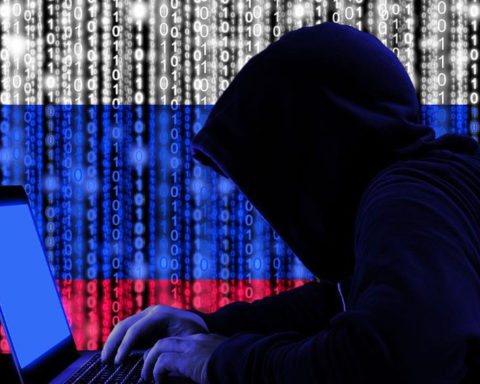C’est peut-être la fin d’une interminable bataille : vendredi 27 avril 2018, les États membres de l’Union européenne ont adopté la proposition de la Commission d’interdire trois néonicotinoïdes (la clothianidine, l’imidaclopride et le thiaméthoxame) à toutes les cultures en plein champ. Ces produits suscitent la controverse depuis leur déploiement dans les années 1990. Pourquoi a-t-il fallu attendre si longtemps ?
Dès 1994, des apiculteurs français signalent en effet de graves troubles affectant leurs colonies. Ces troubles – qui vont jusqu’à la mortalité plus ou moins rapide des abeilles – apparaissent alors principalement au début de la floraison des tournesols qui fournissent une abondante quantité de nectar et de pollen aux insectes.
Après une enquête de terrain, les apiculteurs constatent qu’un nouvel insecticide est utilisé pour le traitement préventif de cette culture : il s’agit de l’imidaclopride, de la famille des néonicotinoïdes. Ces insecticides neurotoxiques agissent en particulier sur le système nerveux central des insectes.
Appelé Gaucho sous sa formulation commerciale, il est produit par la firme chimique allemande Bayer. On l’applique suivant un mode d’administration particulier : l’insecticide n’est pas pulvérisé sur les plantes, mais enrobe les graines de tournesol à partir desquelles il se déplace dans toute la plante.
Un trio de chercheurs volontaires
N’ayant trouvé aucune aide véritable auprès des pouvoirs publics qui ont autorisé l’emploi de cette substance, les apiculteurs se tournent alors vers les scientifiques, susceptibles d’apporter les preuves de la toxicité – ou non – de cette substance.
Mais peu de chercheurs s’impliquent, pressentant sans doute que la tâche serait semée d’embûches ; pas tant d’ailleurs pour des raisons scientifiques, mais plutôt à cause des acteurs impliqués : l’État, et tout particulièrement le ministère de l’Agriculture ; le monde agricole, et tout particulièrement les tenants de l’agriculture intensive ; enfin, Bayer, qui vend l’insecticide.
Seuls trois chercheurs acceptent de se lancer dans « l’aventure » ; leurs noms méritent ici d’être rappelés à l’heure où s’achève cette (trop) longue histoire : Jean‑Marc Bonmatin (chimiste au CNRS), Luc Belzunces, (toxicologue à l’INRA) et Marc Colin (pathologiste à l’Afssa, l’actuelle Anses).
Leurs premiers résultats, publiés d’abord dans des rapports de recherche pour le ministère de l’Agriculture, puis dans des journaux scientifiques (par exemple en 2000, 2003 et 2004), montrent que les abeilles sont exposées à l’imidaclopride par le nectar et le pollen : la molécule leur est très toxique, et ce même lorsque les concentrations sont faibles. Elle provoque notamment des perturbations neurocomportementales pouvant expliquer l’origine des troubles et mortalités constatés par les apiculteurs.
Virulente controverse
Démentant l’implication de l’imidaclopride dans les mortalités d’abeilles, certains prétendent – sans aucune démonstration scientifique – que ces troubles relèvent d’un « mal français » : les apiculteurs ne s’occuperaient pas bien de leurs colonies et celles-ci seraient victimes de la « maladie noire » qui entraîne une paralysie chronique d’origine virale.
Mais comment expliquer que, soudainement, au moment de la miellée de tournesol, les apiculteurs aient cessé de s’occuper correctement de leurs colonies ? Et pour quelles obscures raisons des colonies alors en bonne santé se trouveraient-elles affectées par la maladie noire dès qu’elles butineraient des tournesols traités avec un insecticide très toxique ? Les années précédentes, les mêmes tournesols non traités ne provoquaient aucune maladie…
Débute alors une vive controverse retracée en détail dans un rapport de l’Agence européenne de l’environnement publié en 2013.
Une mise en cause sans appel
En 2003, soit neuf ans après les premiers signalements, le ministre de l’Agriculture, Jean Glavany, décide la création d’un groupe d’une vingtaine d’experts, le Comité scientifique et technique de l’étude multifactorielle des troubles des abeilles (CST), dont je faisais partie. Ce comité s’est réuni deux années durant et a publié son rapport final sur le Gaucho en 2003.
Sa conclusion est on ne peut plus claire :
« Dans l’état actuel de nos connaissances, selon les scénarios développés pour évaluer l’exposition et selon les facteurs d’incertitude choisis pour évaluer les dangers, les rapports PEC/PNEC (“predictive environmental concentration”/“predictive no effect concentration”) obtenus sont préoccupants. Ils sont en accord avec les observations de terrain rapportées par de nombreux apiculteurs en zones de grande culture (maïs, tournesol), concernant la mortalité des butineuses, leur disparition, leurs troubles comportementaux et certaines mortalités d’hiver. En conséquence, l’enrobage de semences de tournesol et de maïs par le Gaucho conduit à un risque significatif pour les abeilles. »
Ce rapport aura un impact important : pour la première fois, la toxicité de l’imidaclopride pour les abeilles est reconnue. Ses conclusions conduiront le ministre de l’Agriculture à suspendre l’utilisation du Gaucho sur deux cultures très visitées par les abeilles, le tournesol et le maïs.
En comparaison avec les rapports d’expertises publiés précédemment sur la toxicité des pesticides pour les abeilles, le rapport du CST innovait, le groupe de travail ayant réalisé une analyse critique des études transmises par la firme Bayer et par les chercheurs publics (INRA et CNRS principalement), ainsi que des articles scientifiques publiés sur le sujet. Ce sont quelque 340 documents qui ont ainsi été analysés en détail.
L’originalité de cette analyse fut d’introduire des critères portant sur la qualité des études, ce qui n’avait été réalisé jusqu’alors ni en France, ni à l’échelle européenne. Ces critères visaient, par exemple, à s’assurer que les échantillons étaient en nombre suffisant et représentatif des conditions naturelles, que des lots contrôles (non traités) étaient bien présents, etc.
L’application de ces critères a conduit à rejeter un grand nombre d’études de qualité scientifique insuffisante qui avaient été prises en compte pour l’homologation du Gaucho.
Il faut rappeler ici que cette analyse approfondie a été rendue possible grâce à des moyens humains importants (deux post-doctorants à plein temps pendant deux ans), les experts des groupes de travail n’ayant que rarement le temps d’analyser en profondeur et de manière critique les très nombreuses études soumises… Un soutien apporté en grande partie par la filière apicole qui a accepté que soit utilisé pour cela de l’argent européen consacré à soutenir l’apiculture.
La question des évaluations
En 2011, la Commission européenne demande à l’Autorité européenne de sécurité des aliments (EFSA) d’apprécier, avant toute mise sur le marché, la qualité des évaluations portant sur les risques que les pesticides représentent pour les abeilles ; et tout particulièrement d’expertiser le système d’évaluation environnementale basé sur les recommandations de l’International Commission for Plant‐Bee Relationships (ICPBR), une organisation proche des firmes phytosanitaires.
Suite à cette demande, un groupe de travail de l’EFSA rédige alors en 2012 un avis scientifique constatant que la toxicité des pesticides mis sur le marché n’a pas été correctement évaluée ; plusieurs aspects essentiels n’ont en effet pas été pris en compte : la toxicité sur les larves, les effets à long terme sur les colonies, la toxicité chronique sur les adultes, la toxicité sublétale (le fait que les abeilles peuvent se trouver désorientées après une exposition à un insecticide, ne retournant pas à leur ruche et mourant rapidement).
Les experts montrent également que les essais conduits sur le terrain suivent une seule ligne directrice, très peu protectrice, établie par l’ICPBR. Les expositions des abeilles aux produits systémiques enrobant les graines, tels que les néonicotinoides, n’étaient ainsi pas réellement considérées.
Depuis la fin des années 1990, les effets de ces produits sur les abeilles n’ont ainsi pas été évalués correctement avant leur mise sur le marché. Et si l’EFSA a proposé en 2013 un nouveau guide pour l’évaluation de ces risques pour les abeilles domestiques et sauvages, ce document n’est toujours pas complètement suivi par les instances d’évaluation du risque au sein de l’Union européenne.
Des informations toujours manquantes
En 2013, l’EFSA évalue les risques associés à l’utilisation de trois néonicotinoides : la clothianidine, l’imidaclopride et le thiaméthoxame, utilisés pour le traitement des semences.
En se basant sur les arguments de l’avis scientifique de 2012 et sur les données de la littérature scientifique, l’EFSA identifie un certain nombre de risques aigus associés à l’utilisation de ces produits. Certaines évaluations n’ont cependant pas encore pu être finalisées, en raison du caractère incomplet des données fournies par les firmes.
Il est particulièrement frappant de constater que, vingt ans après la mise sur le marché de l’imidaclopride et de composés voisins, certaines données n’ont toujours pas été fournies par les compagnies phytosanitaires en vue de finaliser l’évaluation de leur toxicité ; et que, malgré cette absence, ces substances ont été autorisées.
À la suite de cette nouvelle évaluation, la Commission européenne s’est donc résolue à proposer aux États membres de l’Union de suspendre l’autorisation de ces trois insecticides néonicotinoïdes, sauf pour les cultures non attractives pour les abeilles et les céréales d’hiver. Ces trois substances restent donc toujours très largement utilisées dans l’environnement.
En février 2018, soit 17 ans après le rapport du CST et 24 ans après les premiers signalements, l’EFSA publie enfin une nouvelle évaluation qui montre que la plupart des utilisations des pesticides néonicotinoïdes représentent un risque pour les abeilles sauvages et domestiques.
Le moins que l’on puisse dire est que ce processus aura été beaucoup trop long : avant d’autoriser la mise sur le marché d’un pesticide, il faut absolument s’assurer de son innocuité pour la faune et la santé humaine !
Quid des autres espèces ?
Nous avons considéré ici le cas des abeilles, mais bien d’autres espèces ont été très probablement affectées, et ce depuis longtemps, par ces substances
(voir à ce propos différents articles de synthèse parus en 2014, 2015 et 2017).
Mais terminons sur une note d’espoir : en janvier 2018, le Parlement européen a décidé la création d’une commission spéciale chargée d’enquêter sur les modalités d’autorisation des pesticides en Europe.
Il faut espérer que les parlementaires analyseront désormais très rigoureusement toutes les causes qui ont conduit à la mise sur le marché de substances dont la toxicité n’avait pas été suffisamment évaluée pour l’environnement, et qu’il a été si difficile et si long d’interdire. Et qu’ils proposeront de nouvelles modalités d’homologation de ces produits, basées sur les connaissances scientifiques les mieux établies, et l’absence de conflits d’intérêts des experts et des institutions en charge de ces évaluations.
Gérard Arnold, Directeur de recherche émérite, apidologue, Centre national de la recherche scientifique (CNRS)
La version originale de cet article a été publiée sur The Conversation, partenaire éditorial de UP’.
Quelque chose à ajouter ? Dites-le en commentaire.












